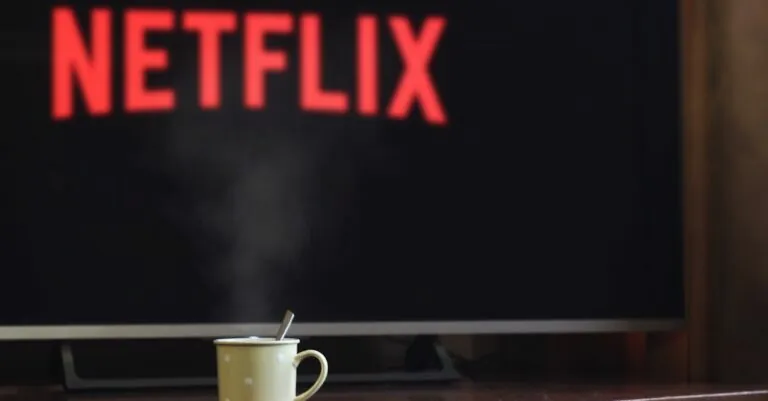Table of Contents
ToggleIn a world where binge-watching has become a competitive sport, streaming obsessions are the new norm. From gripping dramas that keep viewers on the edge of their seats to laugh-out-loud comedies that make even the grumpiest cat crack a smile, it’s no wonder people are glued to their screens. With a never-ending buffet of content at their fingertips, it’s easy to lose track of time and reality.
Understanding Streaming Obsessions
Streaming obsessions represent a cultural shift in how people consume media. Viewers often find themselves immersed in series, losing track of time while binge-watching.
Definition of Streaming Obsessions
Streaming obsessions refer to the intense desire to consume content continuously. This behavior typically manifests through binge-watching multiple episodes in one sitting. Viewers often prioritize their favorite series over daily responsibilities, fostering deeper emotional connections to characters and storylines. Psychological aspects, like escapism, play a significant role; individuals often turn to streaming as a means to escape reality. These consumption patterns significantly affect personal routines and social interactions.
The Rise of Streaming Services
The surge of streaming services transformed media consumption. Over 300 million subscribers use platforms like Netflix, Hulu, and Amazon Prime. These platforms provide vast libraries of content ranging from original series to classic films. As technology advances, accessibility improves, allowing users to watch content anytime and anywhere. Additionally, affordable monthly subscriptions encourage more viewers to engage with various genres. This growth reshapes the entertainment landscape, making streaming the preferred choice for many in today’s society.
Popular Streaming Platforms
Streaming platforms dominate media consumption today, showcasing a variety of content. Each service offers unique features, catering to diverse viewer preferences.
Overview of Major Players
Netflix leads the charge with over 230 million subscribers, providing a vast library of original programming. Amazon Prime follows closely, offering more than 200 million subscribers access to movies, series, and additional perks. Hulu attracts 48 million users with its focus on current TV shows and exclusive content. Disney+, powered by its iconic franchises, claims around 150 million subscribers, enticing families and fans alike. HBO Max captivates 76 million subscribers with high-quality series and films, appealing to those who appreciate premium content.
Unique Features of Each Platform
Netflix excels with its algorithm, recommending shows based on viewing habits. Amazon Prime integrates shopping benefits with streaming, creating a unique bundled experience. Hulu provides the option to watch many shows the day after they air, ensuring timely content. Disney+ stands out due to its extensive library of family-friendly titles and exclusives from the Disney vault. HBO Max showcases blockbuster films and award-winning series, prioritizing quality over quantity to attract discerning viewers.
Psychological Factors Behind Streaming Obsessions
Streaming obsessions arise from complex psychological factors that significantly influence viewer behavior. Two primary elements shape this phenomenon: escapism and the need for connection.
Escapism and Entertainment
Escapism drives many individuals to immerse themselves in streaming content. Audiences look for a reprieve from daily stressors and pressures through addictive narratives. Engaging storylines allow viewers to forget their surroundings, facilitating an emotional release. They find themselves lost in adventures, dramas, and comedies that transport them away from reality. This experience becomes essential for many, offering a break from mundane tasks and worries. Streaming services, like Netflix, Hulu, and Amazon Prime, thrive on this phenomenon, providing extensive libraries that satisfy viewers’ cravings for entertainment.
The Need for Connection
The need for connection plays a vital role in streaming obsessions. Viewers develop emotional bonds with characters, leading to deep investments in their journeys. Relatable stories resonate with audiences, fostering a sense of belonging and shared experiences. Online discussions and fan communities amplify this connection, allowing individuals to engage with fellow viewers. Social media platforms serve as spaces for sharing thoughts and theories, enhancing the viewing experience. As streaming services evolve, their ability to cultivate this sense of connection fuels the phenomenon, keeping audiences engaged and continually returning for more.
Impact of Streaming on Daily Life
Streaming has significantly changed the way people consume media, shaping daily routines and interactions.
Changes in Viewing Habits
Viewers now prefer on-demand content over scheduled programming. Binge-watching has become a norm, with audiences often consuming entire seasons in one sitting. The allure of multiple streaming platforms fosters a wider exploration of genres, making content consumption more diverse. Flexibility in viewing times aligns with busy lifestyles, allowing individuals to watch shows when convenient. Additionally, immersive storytelling keeps viewers engaged for hours, often leading to sessions lasting well into the night.
Effects on Social Interactions
Social interactions have evolved with streaming, as shared viewing experiences often shift to online forums. Virtual watch parties let friends and family connect despite geographical distances. Engaging discussions emerge on social media, creating a community around favorite shows. The phenomenon also leads to an increase in fandoms, where fans bond over shared interests. Conversations about plot twists and character developments become common, enhancing social dynamics. However, excessive streaming may lead to decreased face-to-face interactions, as individuals prioritize screen time over in-person gatherings.
Future of Streaming Obsessions
Streaming obsessions continue to shape media consumption, influencing trends and viewer experiences. Emerging patterns indicate potential shifts in how audiences engage with content.
Predictions for Streaming Trends
Viewers gravitate towards personalized streaming experiences, leading to growth in AI-driven recommendations. Content diversification also increases, with platforms broadening genre offerings to attract niche audiences. Statistics show that immersive content—such as virtual reality and interactive programs—gains popularity, elevating viewer engagement. Monthly subscription models may evolve, as platforms explore ad-supported tiers to maximize revenue. Furthermore, exclusive releases, like live events and limited series, heighten competition among platforms, driving subscriber growth.
Potential Challenges for Viewers
Viewers may face overwhelming content choices, resulting in decision fatigue. Subscribing to multiple platforms complicates access, leading to higher costs and potential disillusionment. Streaming fatigue might arise as binge-watching habits create unrealistic expectations for content consumption. Social interactions might diminish as face-to-face connections decline in favor of screen time. Moreover, mental health concerns could surface due to excessive escapism, prompting viewers to recalibrate their relationships with media.
Streaming obsessions have undeniably reshaped how audiences engage with media. The allure of binge-watching creates a unique blend of entertainment and emotional connection that draws viewers deeper into their favorite narratives. As streaming platforms continue to evolve and expand their offerings, the challenge lies in balancing this immersive experience with real-life interactions and responsibilities.
While the benefits of escapism and community are significant, it’s essential to remain mindful of the potential downsides. As viewers navigate their streaming habits, maintaining a healthy relationship with content consumption will be key. The future of streaming promises exciting innovations, but it’s crucial to approach this evolving landscape with awareness and intention.







